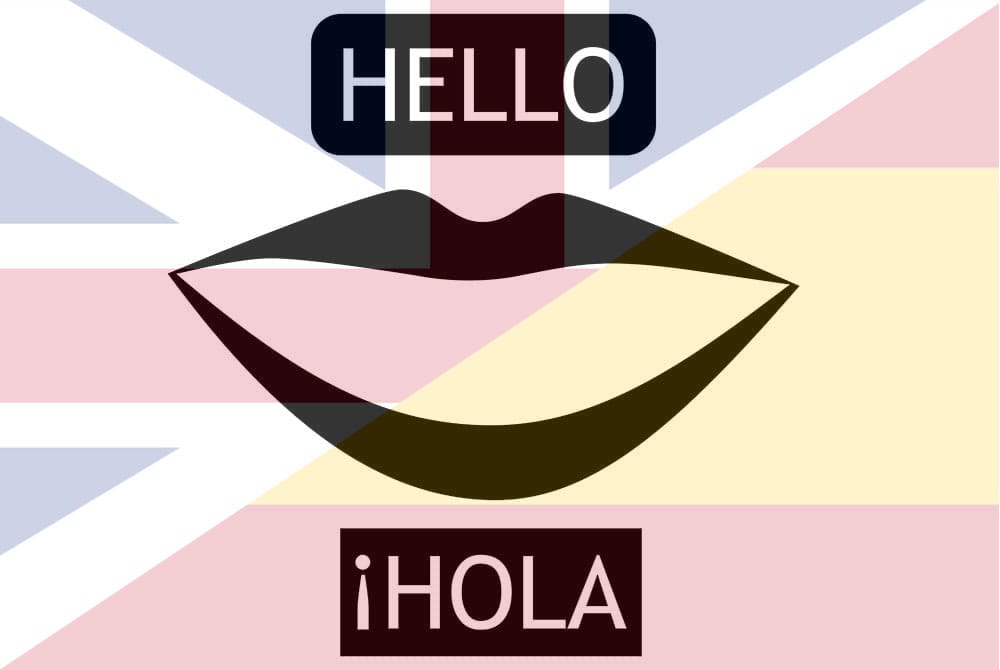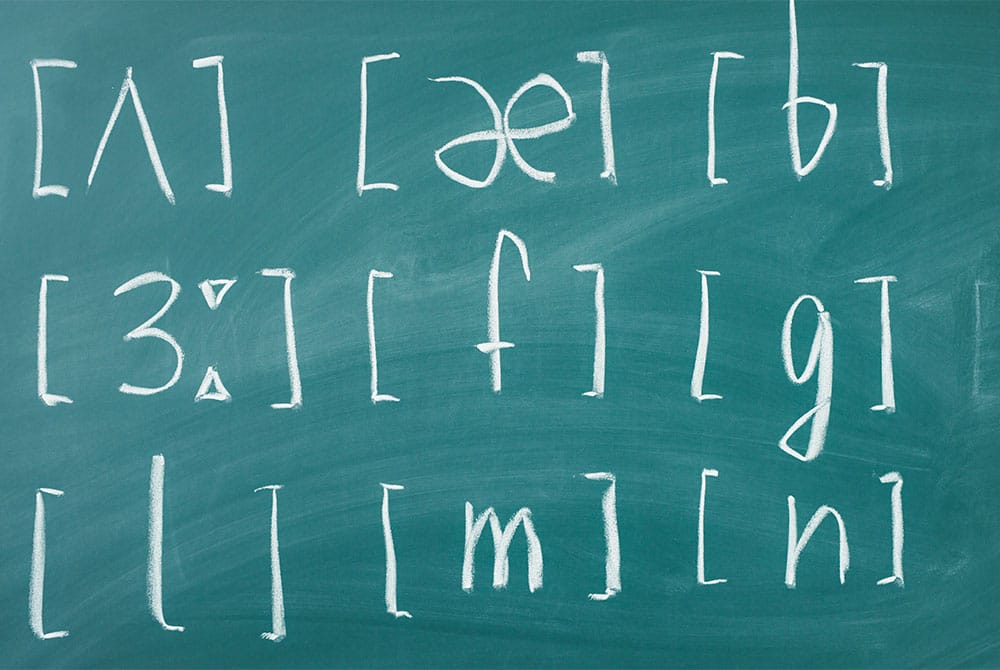Learn to Pronounce Spanish in Just 15 Minutes

Learn to Pronounce Spanish in Just 15 Minutes
Learn how to pronounce Spanish
It’s important to learn how to pronounce Spanish correctly.
This blog post is a must-read for learners of Spanish. It’ll give you the keys to mastering Spanish pronunciation in a quick, thorough, and easy way.
Spanish is a phonetic language.
This characteristic makes learning Spanish very easy because you just have to say what you see.
It’s possible to work out the pronunciation of a word if you know how to pronounce each letter and groups of letters.
What’s more, many letters in Spanish sound similar to English letters.

But how are these letters and words pronounced?
Let’s take a look at an important tool for improving your Spanish pronunciation.
We’re talking, of course, about the International Phonetic Alphabet (IPA).

The International Phonetic Alphabet
The IPA is a standardised way to represent the sounds of letters and groups of letters in each language.
It contains a series of symbols called phonemes that represent the sound of each letter.
Phonetic transcriptions (the way a word is pronounced) appear between slashes / /.
You’ll find a table showing the Spanish alphabet and the sounds associated with each letter at the end of this blog post.
To help you to understand how each letter sounds, there is:
1. A similar sound in English, which will help you to get an idea of how it should sound.
2. A Spanish word that includes that letter. Press on the icon to hear how it sounds.
3. The International Phonetic Alphabet (IPA) symbol for the phoneme and an audio so you can hear how it sounds.
Once you learn the phonemes and which letters they refer to, you’ll be able to pronounce any word in Spanish.
Many dictionaries include a phonetic transcription of each word.
Be sure to use this when you study Spanish!
Here are some examples:
- Babosa /babosa/
- Gracia /graθia/
- Espejo /espexo/
Every time you learn a new word, we recommend that you make a note of its phonetic transcription so you remember how to pronounce it.
Learning the 32 sounds that we’ve taught you in this blog post will help you to pronounce Spanish with ease.
Using the phonetic alphabet will enable you to remember the pronunciation of words that you come across in your daily Spanish studies.
Now let’s focus on some special features of Spanish pronunciation.

Letters with various sounds
You’ll see from the table that there are some letters that can have different sounds:
- The letter B: /b/ and /β/.
- The letter D: /d/ and /ð/.
- The letter S: /s/ and /z/.
The sounds are very similar in these cases, so you can use either when speaking.
- The letter C: It can be pronounced as /k/ and /θ/. In this case, the difference is very important. For example, the C in “casa” has a different sound to the C in “cereal”. They are pronounced differently. To know which one of them you need to use, you have to learn some simple spelling rules. The phoneme /k/ is pronounced in words where the C is followed by the vowels a, o and u, e.g. “casa”, “cosa” and “cuna”. On the other hand, the phoneme /θ/ is pronounced when the C is followed by the vowels e and i, e.g. “cena” and “cine”.
- The letter G: It can be pronounced as /g/, /ɣ/ and /x/. The first two phonemes are very similar, but the third sound is very different. To know which one of them you need to use, you again have to memorise some simple spelling rules. In short, the phonemes /g/ and /ɣ/ (soft G) are pronounced when the G is followed by the letters a, o and u, e.g. “gato”, “goma” and “guante”. However, the phoneme /x/ is pronounced when the G is followed by the vowels e and i, e.g. “gente” and “gigante”.
- The letter Y: It can be pronounced as /i/, /ʝ/ and /j/. Here, there is a slight difference between the sounds but using any of them is acceptable.
Sounds that don’t exist in English
There are sounds in Spanish that don’t exist in English, such as ñ, r and j.
Don’t worry, we’ll help you to understand how to pronounce them. With a bit of daily practice, it’s easy to pick up.
- The letter ñ: phonemic symbol /ɲ/. The word “canyon” in English contains a similar sound. Spanish example: cañón.
- The letter r: phonemic symbol /ɾ/ (click below to hear how it sounds). It’s difficult to find an English word that contains a similar sound. However, some words in Scottish and Welsh dialects of English have the sound /ɾ/. Spanish example: caro.
- The letter rr: phonemic symbol /r/. It’s probably the most difficult sound to make. There isn’t a similar sound in English, so you’ll have to learn to pronounce it from scratch. Spanish example: corre.
- The letter j: phonemic symbol /x/. Again, it’s difficult to find an English word that contains a similar sound. However, the word “loch” in Scottish English contains the sound /x/, which is fairly similar to the Spanish pronunciation. Spanish example: jardín.
Symbol, sound, example, transcription and phoneme
a
father
azahar
a
phoneme
b
about
bestia
b
phoneme
b
about
obtuso
β
phoneme
c
scan
casa
k
phoneme
c
thing
cereal
θ
phoneme
ch
choose
chubasco
tʃ
phoneme
d
this
admirar
ð
phoneme
d
today
dedo
d
phoneme
e
set
elefante
e
phoneme
f
face
fábrica
f
phoneme
g
again
gato
g
phoneme
g
again
trigo
ɣ
phoneme
g
Scotish Loch
gente
x
phoneme
h
(silent sound)
hotel
No phoneme
i
see
iglesia
i
phoneme
j
Scottish loch
jardín
x
phoneme
k
scan
kilo
k
phoneme
l
lean
luna
l
phoneme
ll
million
millón
ʎ
phoneme
m
mother
madre
m
phoneme
n
need
necesidad
n
phoneme
ñ
canyon
cañón
ɲ
phoneme
o
more
oso
o
phoneme
p
spouse
peso
p
phoneme
q
scan
quien
k
phoneme
r
Scottish curd
caro
ɾ
phoneme
rr
Welsh bright
corre
r
phoneme
s
sack
saco
s
phoneme
s
zoo
isla
z
phoneme
t
stand
toro
t
phoneme
u
food
uno
u
phoneme
v
about
vaca
b
phoneme
w
wine
whisky
w
phoneme
x
flexibility
flexibilidad
ks
phoneme
y
baby
muy
i
phoneme
Other useful resources
Aucel: An online phonetic transcription tool. You can search the phonetic transcription of any word.
Google Translate: A well-known and useful tool. A great feature is that you can listen to an audio clip of the word to hear it pronounced properly.
You’ll see that Spanish pronunciation isn’t that difficult to master if you use the right resources!
References:
International Phonetic Alphabet for Spanish:
https://en.wikipedia.org/wiki/Help:IPA/Spanish
Phonetic Transcription:
http://www.aucel.com/pln/transbase.html
Google Translate:
https://www.google.com/search?q=google+translator&oq=google+translator&aqs=chrome.0.69i59.2439j0j1&sourceid=chrome&ie=UTF-8
Website about Scottish Gaelic:
https://learngaelic.scot/
1,000+
happy students
every year
2008/21
13 years
of learning together
ALL
Spanish
levels
+34 606 856 991
contact us on
WhatsApp
